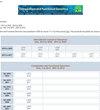Antihypertensive Drugs and Dental Caries Risk: A Drug–Target Mendelian Randomization Analysis
Abstract
Introduction and Objectives
To address the clinical uncertainty surrounding the effect of antihypertensive drugs on dental caries, this study was aimed at investigating the causal relationships between antihypertensive medication use and the risk of dental caries, utilizing a drug–target Mendelian randomization (MR) approach.
Methods
Nine antihypertensive drug classes′ influences on dental caries risk in the UK Biobank and FinnGen populations were assessed using drug–target MR. This genetic method utilizes randomly allocated gene variants as proxies for drug exposure, minimizing the confounding biases inherent in observational studies and allowing for more robust causal inference. Genetic variants associated with systolic blood pressure near the drug target genes were used to proxy for medication effects.
Results
In the FinnGen cohort, genetic analysis linked calcium channel blockers to a 3.3% reduction in dental caries risk (OR: 0.967, 95% CI: 0.949–0.985) and loop diuretics to a 6.9% reduction (OR: 0.931, 95% CI: 0.897–0.966). Conversely, aldosterone antagonists were suggestively associated with an 8.2% increased risk (OR: 1.082, 95% CI: 1.017–1.150). Notably, the protective trend for calcium channel blockers and loop diuretics was also observed in the UK Biobank. These findings, validated by eQTLs, highlight the impact of antihypertensive drugs on dental health.
Conclusion
The study suggests that calcium channel blockers and diuretics could potentially reduce the risk of dental caries. Additional research is needed to assess the feasibility of repurposing antihypertensive medications for the prevention of dental caries.


 求助内容:
求助内容: 应助结果提醒方式:
应助结果提醒方式:


